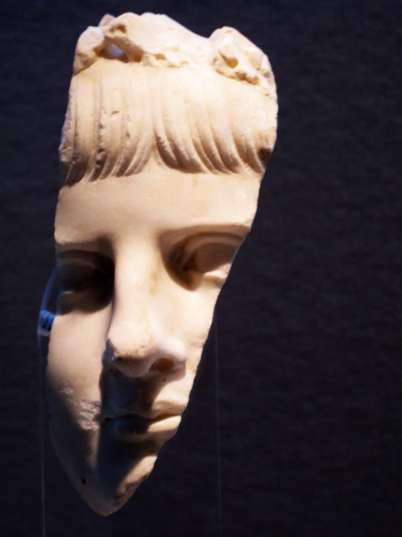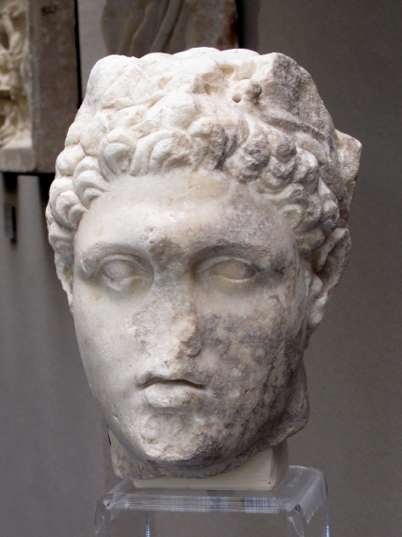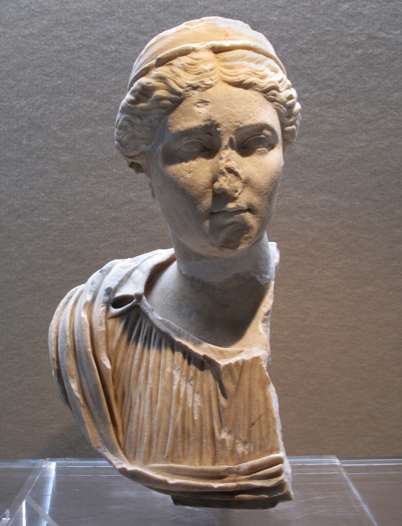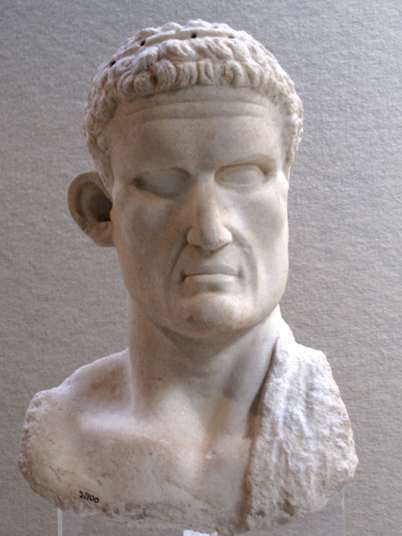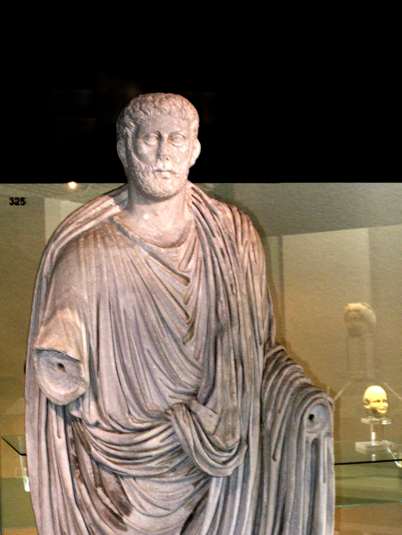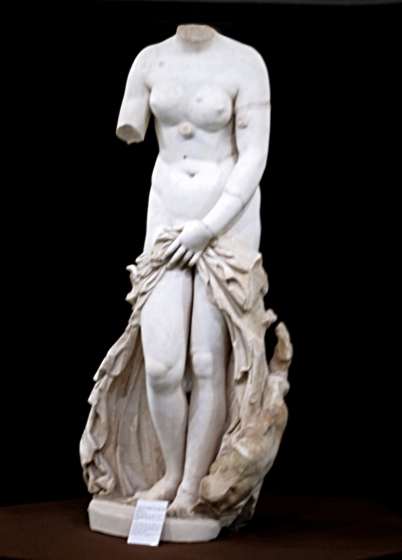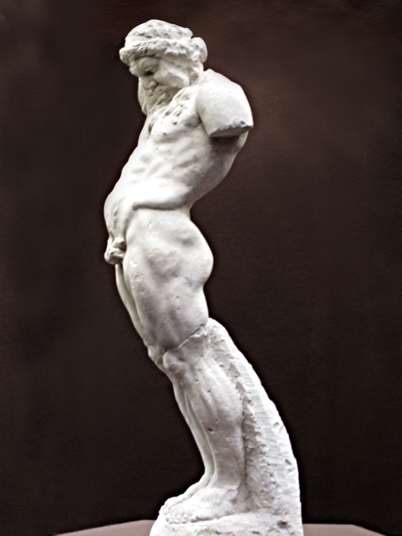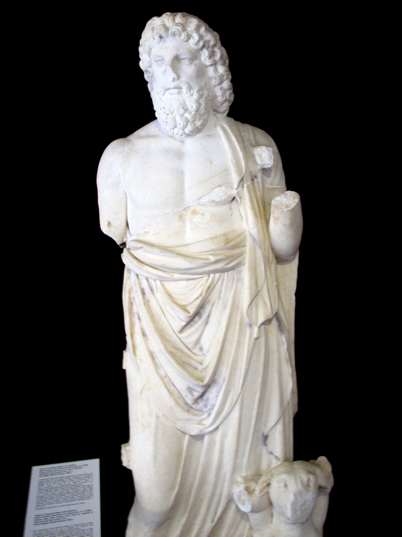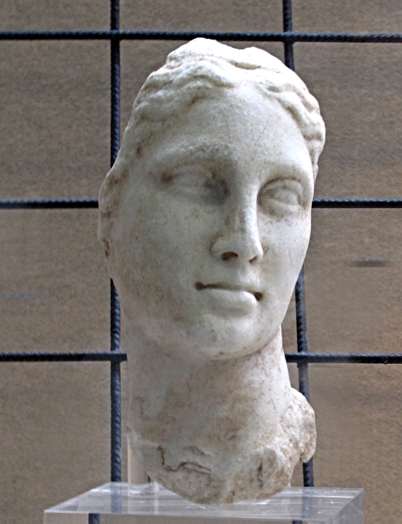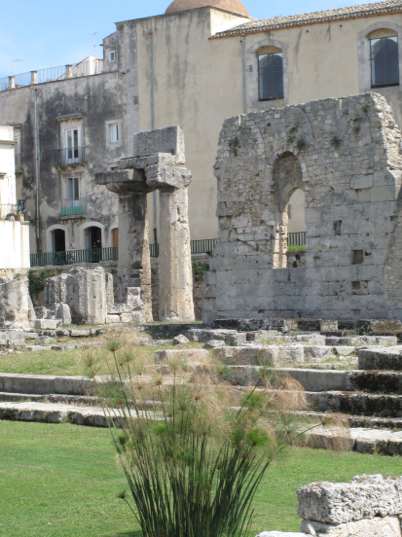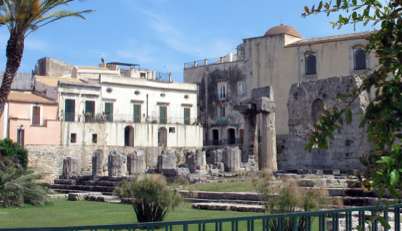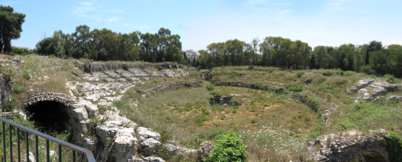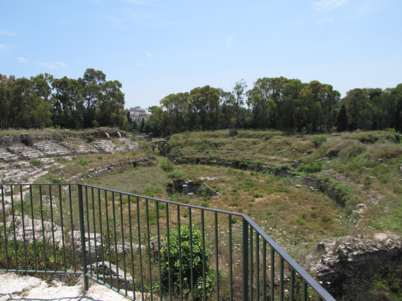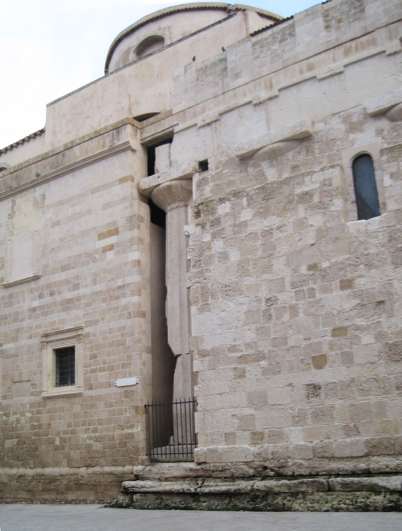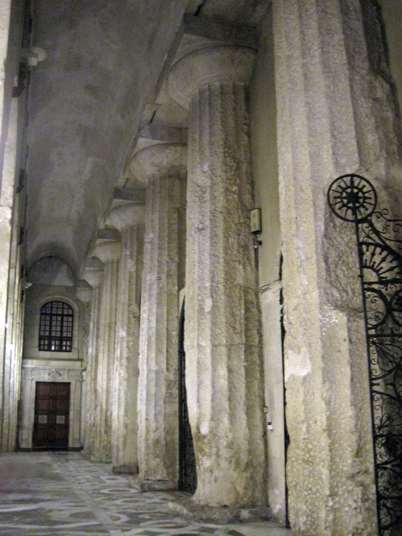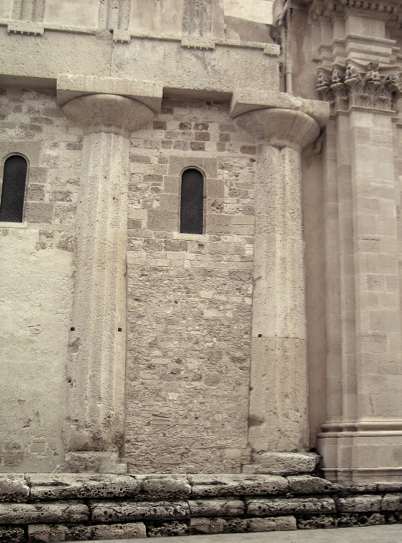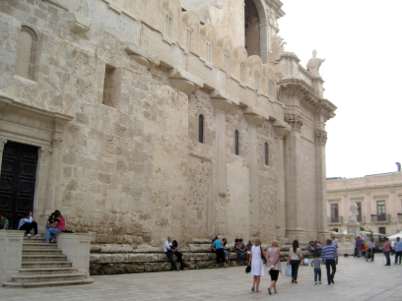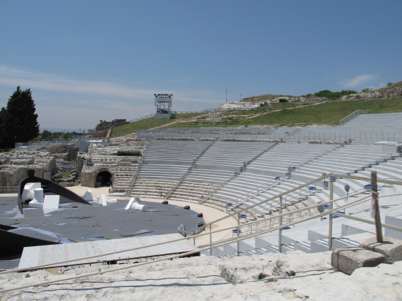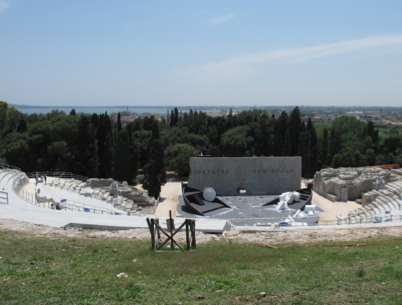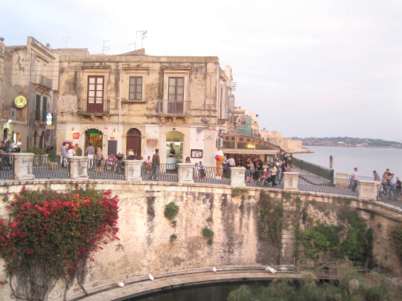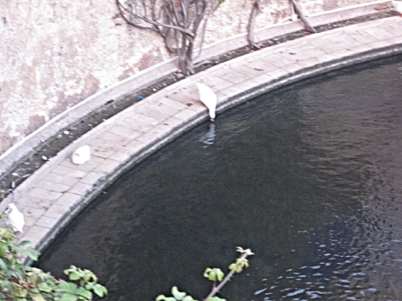The ROMAN CIVILIZATION
IMAGES OF THE ROMAN CIVILIZATION
Syracuse City-State of Sicily
The nucleus of the ancient city was the small island of Ortygia.
Sicily, which was wrested from Carthaginian control during the First Punic War (264–241 BC), was the first province of the Roman Republic not directly part of Italy.
The Siege of Syracuse by the Roman Republic took place in 214–212 BC, at the end of which the Magna Graecia Hellenistic city of Syracuse, located on the east coast of Sicily, fell. The Romans stormed the city after a protracted siege giving them control of the entire island of Sicily. During the siege, the city was protected by weapons developed by Archimedes. Archimedes, the great inventor and polymath, was slain at the conclusion of the siege by a Roman soldier, in contravention of the Roman general Marcellus' instructions to spare his life.
Syracuse was later extensively rebuilt and repopulated and would be an important city for the Roman empire until well into the 5th century, playing both a military and economic part in the creation of the empire.
Though declining slowly through the years, Syracuse maintained the status of capital of the Roman government of Sicily and seat of the praetor. It remained an important port for trade between the Eastern and the Western parts of the Empire. Christianity spread in the city.
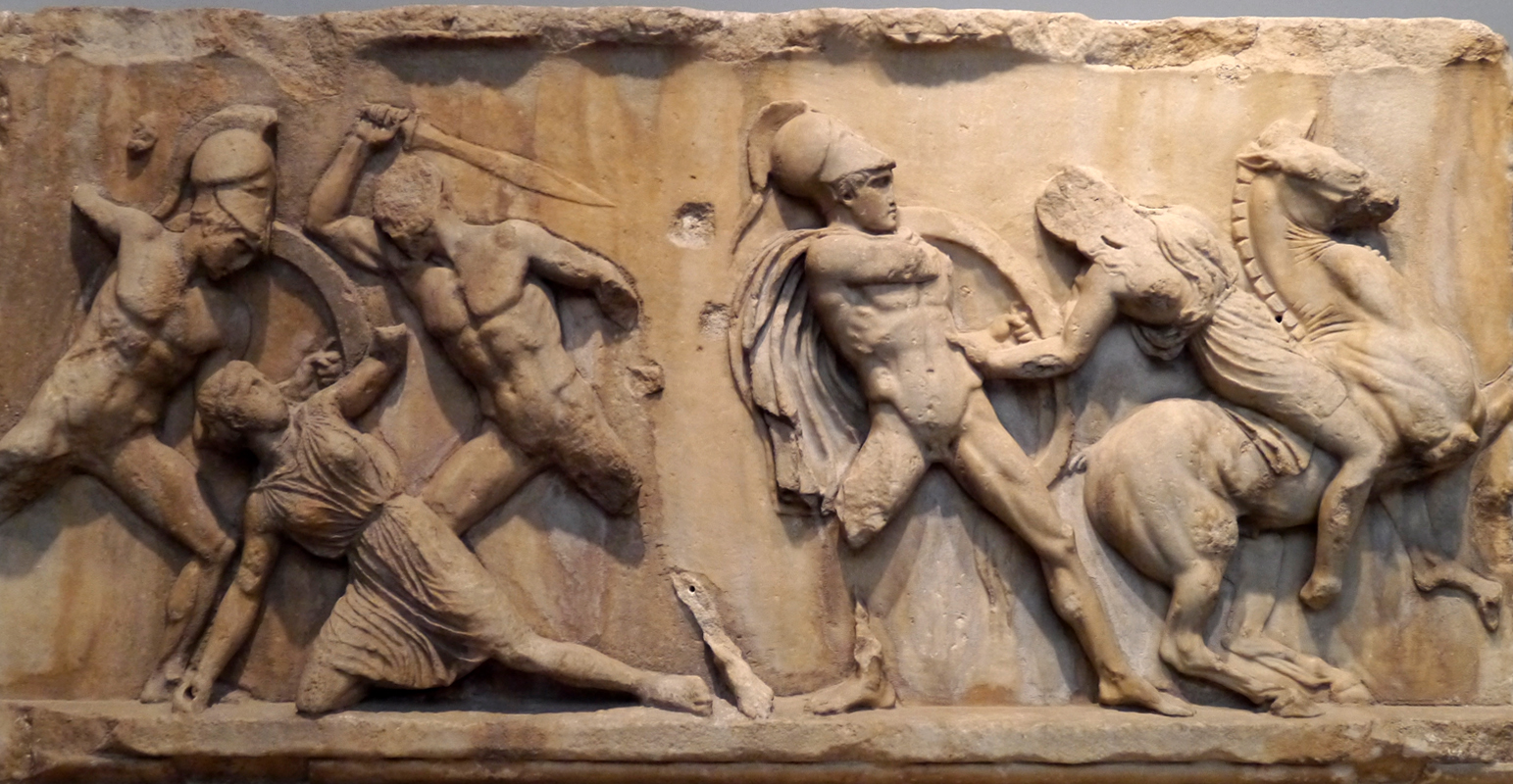
the Peloponnesian War
Syracuse is know for it's part in the Spartan - Athenian the Peloponnesian War’
The Sicilian Expedition was an Athenian military expedition to Sicily, which took place during the period from 415 BC to 413 BC (during the Peloponnesian War). The expedition was hampered from the outset by uncertainty in its purpose and command structure—political maneuvering in Athens swelled a lightweight force of twenty ships into a massive armada, The impact of the defeat was immense. Two hundred ships and thousands of soldiers, an appreciable portion of the city's total manpower, were lost in a single stroke. This was more than just a military victory: it showed that the Syracusan democracy, which had seen heavy tensions, could be an effective system to govern the nation.
Syracuse sided with Sparta in the Decelean or Ionian War (413-404), which was to culminate in the fall of Athens and the dismantling of its empire.
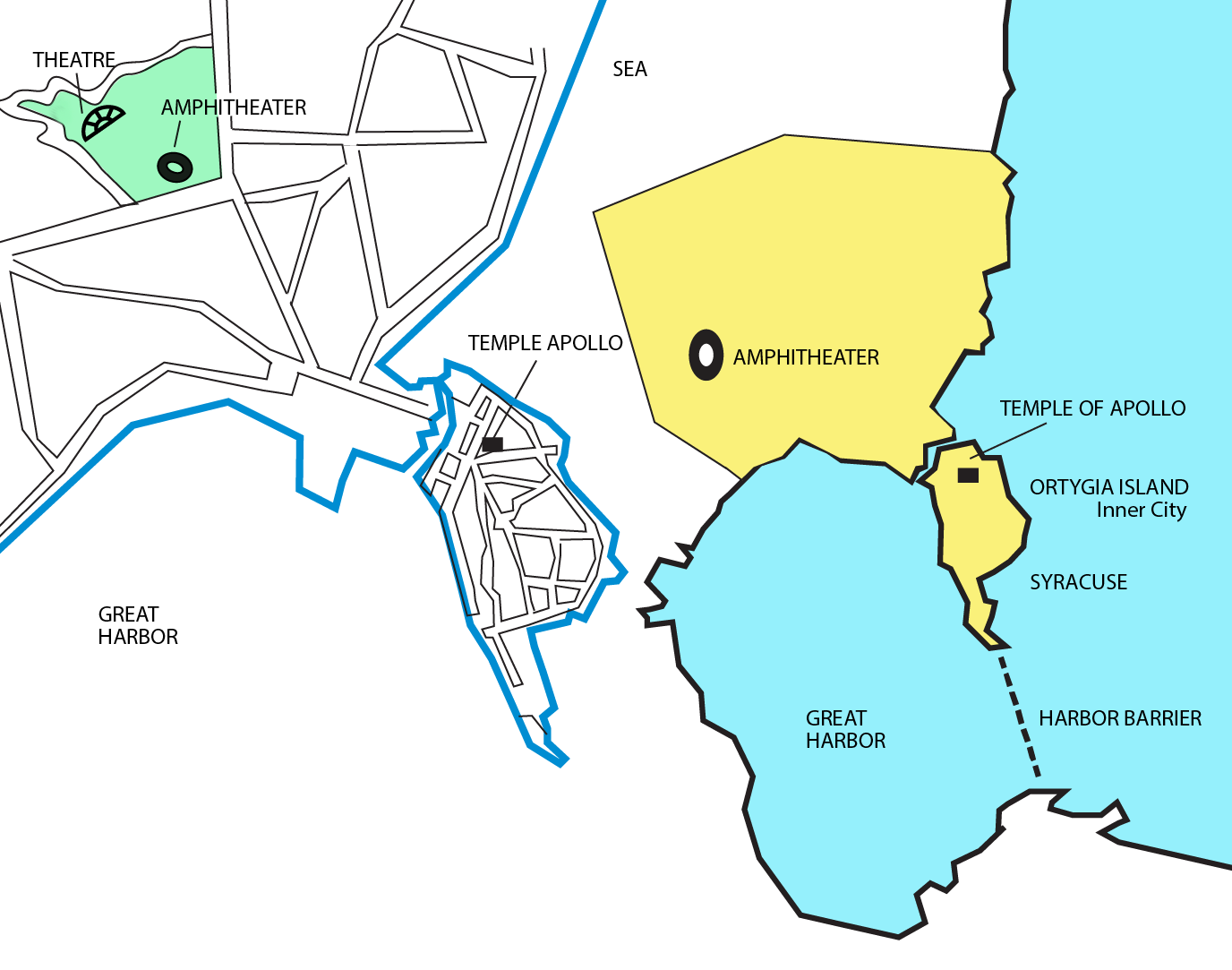
CLICK ON IMAGES FOR TO IN LARGE ⬇︎
Ortygia
the Temple of Apollo
This monument at the northern edge of the island Ortygia, is the most visible of ancient remains in modern Syracuse (satellite photo). It was built of local sandstone by an architect named Epicles, in c.575 BCE.
the cathedral
One has only to enter the town's baroque cathedral (Duomo), however, to stand in an ancient temple. It was once dedicated to the goddess Athena (Minerva) and may have been erected to celebrate the victory at Himera in 480.The Temple of Athena was converted into a church in the seventh century by Zosimus, bishop of Syracuse from 649AD to .660AD.
the aRETHUSA
Fonte Aretusa, the well of the nymph Arethusa, now a pond in a terrace near the waterfront of the Great Harbor According to Greek myth, the nymph lived in Elis, and the river god Alpheus tried to seduce her. She jumped into the Ionian Sea, and reappeared on Sicily. The god, however, followed her, and reappeared in the neighborhood. There is, indeed, a sweet spring inside the harbor.
the GREEK THEATRE
The Theater retains much of the Auditorium, carved into the rock of the hill Temenite with 67 orders of steps. The other part and the temples that stood on the summit, over the centuries have often been used as a building material
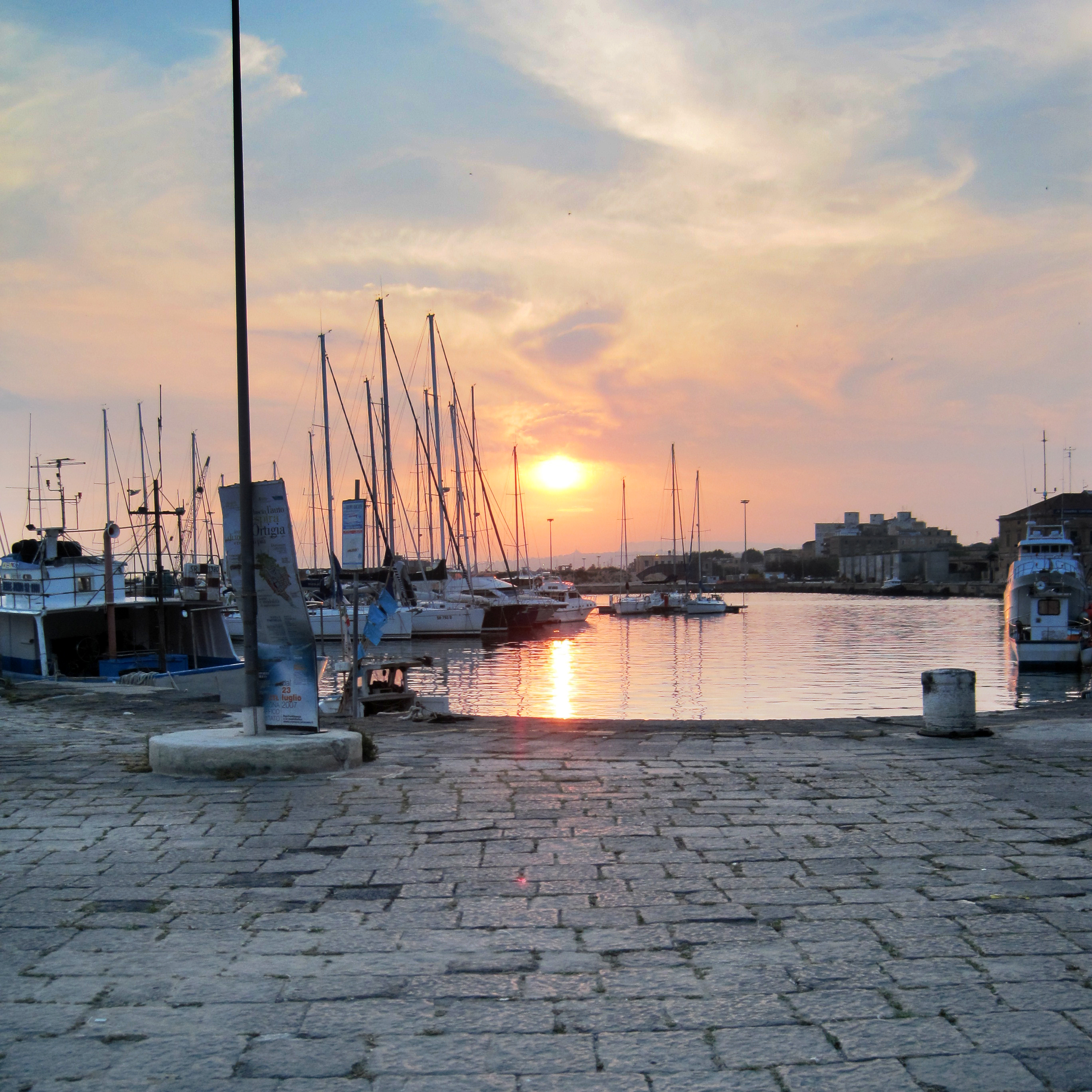
THE GREAT HARBOUR
BACK TO THE TOP
